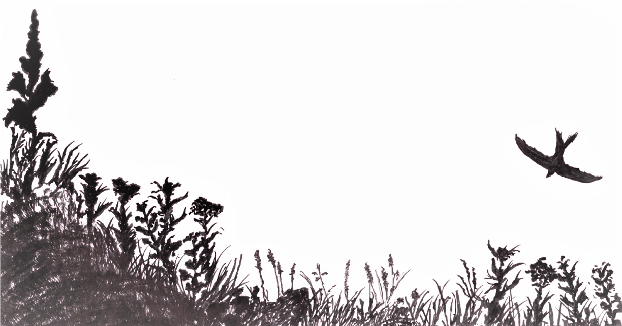The Sanderstead to Whyteleafe Countryside Area lies on the border of Purley and Whyteleafe forming part of the North Downs. This beautiful 200-acre area includes downland, fields, woodland and scrub.
The chalk down and fertile valley of the Bourne below have attracted man for hundreds of years. Signs of early man include an ancient earthwork (Newe Ditch) on Riddlesdown, a Saxon Cemetery close by in Mitchley Avenue and Iron Age pottery fragments found in Whyteleafe Recreation Ground.
In 1843 White Leaf was just a name of a field, referring to the white underside of the leaf of a whitebeam tree, a chalk loving tree, common on the North Downs. During Victorian times this name was adopted for the whole area and the spelling changed to Whyteleafe.
Local people, led by Sir William Jones, raised money to buy the land now forming the recreation ground in 1924.
The hillside above the recreation ground is known as ‘The Dobbin’, which according to a publication from the Bourne Society in 1962 had an engine that worked a wire and pulley system for hauling up waste, which used to be dumped at the top.
The Skylark Field, named after the ground nesting bird, was once part of a larger common, consisting of Hamsey Heath and Ryddelesdowne, which was grazed by tenants from both Sanderstead and Warlingham.
At the north end of the field stands ‘The Rifle Butt’, a huge earthen mound behind the targets of a rifle range set up by the 2nd Surrey Rifle Volunteer Corps in 1860. In 1866 it was described as ‘one of the finest long ranges in the kingdom’. The range was in use until at least 1891.
The Bridleway from Tithepit Shaw Lane to the junction of Dunmail Drive and Honister Heights was once named Broadwaye, according to a document from 1575.
Halfway along the Broadwaye stands a concrete pillar, which is an Ordnance Survey Triangulation Point. It is one of the many fixed points from which the O.S. made its surveys.
The Whitgift Field at the northern end of the area is made up of two old fields, which in 1844 used to be called Knockendon and Upper Knockendon Fields. The fields have not been farmed for several years and have become completely overgrown. Volunteers have spent many hours clearing dense ash thickets to bring back the chalk wildflowers which used to grow here.
